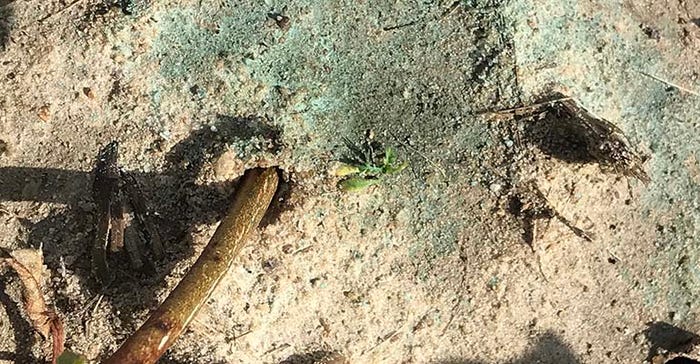November 7, 2018

More than a year ago, I heard about the Blue River See and Spray system. Sitting in a lecture room during InfoAg in 2017, I got a glimpse of the future of how artificial intelligence could be put to work in a very practical way — killing weeds.
I’ve followed the technology as the company was purchased by John Deere early in 2018, and I’ve wanted to see the sprayer in action. On a hot October day at Sunbelt Ag Expo, I got my chance. And frankly, I am amazed.
I’ve covered farm technology and equipment for more than 30 years, and it’s kind of surprising where we’ve come on this journey. I’m convinced that use of artificial intelligence and machine learning will make a big difference. Here’s a closer look at the See and Spray technology.
The hooded sprayer houses a vision system and 20 nozzles for each row. The vision system “sees” weeds in the field and directs a nozzle to spray the weed as it’s seen. The system can accurately distinguish between a crop plant and a weed. In this case, the sprayer was working a seedling cotton field planted especially for the show demo field.

HITTING THE TARGET: In the middle of that spray of blue dye, you can just spot the seedling weed that the See and Spray system “saw” during application. Note that the tiny weed was hit, but there’s little spray near the crop to the left.
This sprayer was getting a lot of interest because in action, it can reduce crop protection product use by more than 90%. I’ve heard up to 94%. Think about that. If it takes 100 gallons to spray a field on your farm, with this machine, you might end up using only 10 gallons on that same field.
That’s not only a significant savings in input costs, which is welcome no matter what crop prices are, but it’s also a great environmental story that agriculture can tell the public.
Super-precise, for sure
It’s interesting to watch the sprayer move through the field. During the demo, the unit was spraying water with a dye so you could see the spray pattern. In the photo above, you can see a spray area and a very tiny weed. The system “saw” that weed and hit it, without spraying the crop.
Whether you’re spraying a selective or a nonselective herbicide, there is a savings. And farmers I’ve talked to informally about this system are willing to give up a little crop if it means a tough weed like Palmer amaranth gets taken out in the process. Noted one farmer: “The crop will always fill in if a plant gets hit.”
When it first hit the field, the See and Spray was moving at about 4 mph. During the Sunbelt Ag Expo demo, that sprayer was moving at 6 mph — a 50% increase. Speed is important when hitting a crop to kill weeds; you want to cover the territory.
However, a machine like this, when linked to an automated drive system, could change some rules. Even at 6 mph, if there were no need for an operator, you could put this unit in a field and move on to another task. At 90%-plus less product applied, this sprayer connected to a 300-gallon tank could run all day with minimal tending.
The convergence of automation and artificial intelligence will change the way we farm.
About the Author(s)
You May Also Like






